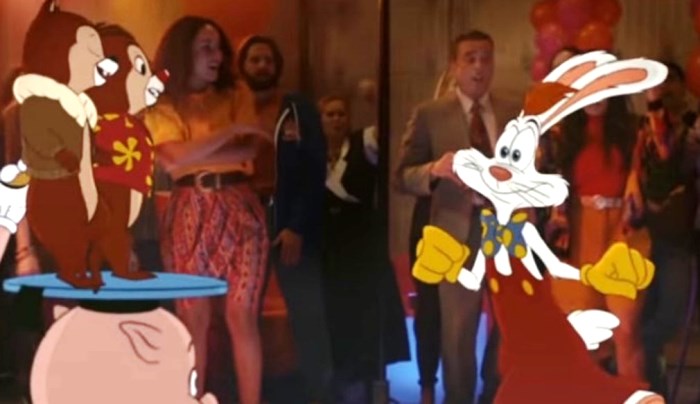In the late 1980s and early 1990s, a peculiar trend bucked in the hip-hop world called the “Roger Rabbit dance”.
For those who aren’t around at that time, the name can sound a bit silly. But if you take a look at the recordings of the Roger Rabbit … it’s actually not a shabby move!
In this article, we will delve deep into the history of the Roger Rabbit dance and explore its roots. From the unique moves to its influence on popular culture and its impact on the music industry!
Table of Contents
What Is The Roger Rabbit Dance?
The Roger Rabbit dance is a popular hip-hop dance move that originated in the late 1980s and early 1990s.
If you’re a fan of 80s-90s animation movies, you’ll probably remember the “Roger Rabbit” character from the 1988 film “Who Framed Roger Rabbit?” that’s known for its distinctive hopping movements.
Well, that’s where both the origin of the Roger Rabbit name and dance came from! This dance basically captures that hopping motion of Roger Rabbit and puts it into real life.
The dance involves a series of quick hops in which the dancer alternates their feet while moving backward. When done correctly, the hopping motion should create an illusion of the dancer bouncing on their toes, much like Roger Rabbit in the cartoon.
Today, the Roger Rabbit dance is considered one of the basics of hip-hop moves and is often seen in hip-hop music videos. You’ll also find it done at many dance competitions and clubs, owing to its simplicity and timeless good look.
But the dance isn’t merely limited to hip-hop culture. It’s also made its way to mainstream culture, as well.
This move has been prominently featured in movies, TV shows, and commercials and referenced in popular songs like “The Humpty Dance” by Digital Underground.
Check more: Who Created The Waacking Dance? History, Characteristics & More
When Did The Roger Rabbit Dance Come Out?
The dance becomes popular right around the movie’s release. As “Who Framed Roger Rabbit?” was a huge hit among the public, hip-hop savants quickly caught onto the jazzy movement of the animated character and turned it into a whole dance.
Not many records of who, where, or when the dance appeared exactly are available.
But we know that Roger Rabbit and other classic hip-hop moves like the Cabbage Patch and the Kid n’ Play kick-step (which, fun fact, was also adapted from a movie, House Party released in 1990, by the rap duo Kid ‘n Play.)
How To Do The Roger Rabbit Dance?
To perform the Roger Rabbit dance, the dancer starts with their feet together and hops backward on one foot, crossing the other foot behind them.
They then switch their weight to the other foot and repeat the same movement, crossing the other foot behind them again. The dancer alternates their feet while hopping backward quickly and fluidly.
Once again, the aim when executing the dance is to give the audience a view of you hopping on your toes.
And since the dance is meant to copy the movement of Roger Rabbit, if you want to practice it, we highly recommend giving “Who Framed Roger Rabbit?” a watch (or re-watch) and noting the way that he moves.
The Roger Rabbit dance is often used as a transition move in hip-hop choreography and can be combined with other dance moves to create a unique routine. It’s also widely used in freestyle dance battles.
This dance’s simple and improvisational nature makes it a good suit for this type of competition, where dancers want to showcase their skill and creativity to the max with their choreography!
Final Words
Unlike many other hip-hop dance moves that popped up during the 80s and 90s era (arguably the Golden Era of hip-hop), the Roger Rabbit dance has become an integral part of the community and managed to withstand the test of time.
Nobody back then would ever have thought that a silly dance move that takes after the animated character from “Who Framed Roger Rabbit?” would become so enduringly popular among hip-hop dancers.
But, as we said earlier, it didn’t just become popular among hip-hop dancers. The dance move has also made its way into mainstream culture, appearing in movies, TV shows, and commercials and referenced in popular songs alike.
And the best part is that it’s so very easy to practice and master at home. If you’re interested, give it a shot and tell us in the comments how it goes!

